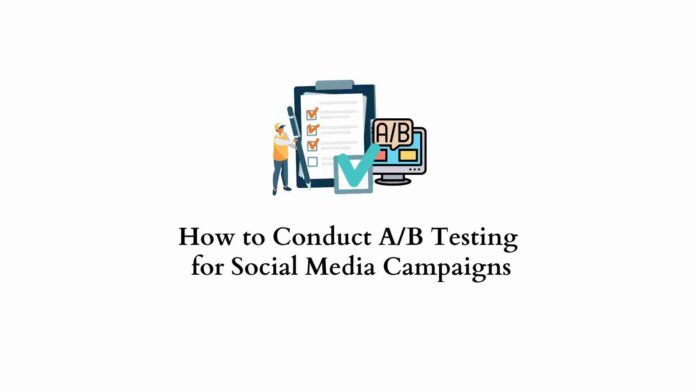Social media campaigns can be difficult to assess at times. Some may blow expectations out of the water, while other times, you are left scratching your head. Sometimes social media campaigns can be compared to the real estate industry.
The difference is that you are buying real estate online. But just like a real estate agent, you need to know the market. That’s why many companies are turning to media-buying agencies for help.
Let’s start by understanding how A/B testing works when it comes to social media campaigns.
What is A/B Testing for Social Media Campaigns?
Social media A/B testing helps evaluate what works and what doesn’t in terms of performance. It involves comparing two methods, version A and version B, in the form of a post or ad. The goal is to identify click-through rates, conversions, engagement, and other important metrics to push through the best product or approach.
This can be done through various social media platforms. TikTok, YouTube, Instagram, Facebook, and Snapchat, are just a few platforms to name. A company could use testing on platforms they already run or try a new campaign with a specific platform to see if that fits with their company.
How to Run A/B Testing for Social Media Campaigns
Having a general idea for executing A/B testing is the first step when considering bringing on a media buying agency. That way, you know exactly what you are looking for. Let’s go step by step.
Step 1: Understand your Goals
Before running any testing, you should have a general sense of what numbers and metrics you are trying to reach. These engagement numbers will give you a better sense of what social media campaigns are working.
Click-through rates are an important stat to consider because it determines who is engaged with a post versus who may be skipping over it or inactively watching.
Step 2: What are Your Variables
When coming up with A/B testing, you must choose variables that make a difference. When two campaigns are two similar, it can be difficult to see what makes one successful over another. If you are looking into what trends are working and what are not, this is a great variable.
Having said that, when two campaigns are vastly different, it can be equally as hard to know what the difference is. It’s important to understand what your variable is and modify that over time to get a clearer definition of your metrics.
Step 3: Do You Have a Hypothesis?
A/B testing requires a hypothesis, just like any experiment would. Defining your expected outcomes can give a vision of what you are trying to accomplish. It also makes the testing more interesting if you choose to share the results with your audience. Some media-savvy brands have done this to show transparency.
Step 4: Who are Your Test Groups?
Creating the same conditions for each post is one way to run an A/B test. This would create a consistent environment that could draw out results more clearly. Choosing the right kind of test group is equally as important as your variables and your constants.
Having a large enough sample size to eliminate any skewed or nuanced results is the first thing to consider. The sample size should also be carefully curated so that the quality is there. For example, an audience who is unengaged or doesn’t really fit the criteria will muddy the results.
Step 5: Start Your Tests
Pick a time to run the tests. Your social media campaigns should be run at equal lengths during the same time or conditions. The exception to this is when you are running a test on what time you should run your social media. Since many social media platforms tell you what times your social media posts do their best, this isn’t always the testing parameter.
Whether an agency or you are running the testing in-house, these tests should be constantly monitored. While you don’t want to tweak anything mid-test, keeping an eye on them helps you understand trends.
Step 6: Analyze, Rinse, and Repeat
Once the social media campaigns have run their course, it’s time to analyze the results. For consistent improvement, consistent A/B testing needs to be done. By analyzing the results, you should be able to tweak different variables and constants to answer new questions from the tests.
This method is tried and true, allowing companies to consistently evaluate where they are at with their own social media platforms.
Why Use a Media Agency?
When looking at the steps to running social media A/B testing for marketing campaigns, it seems pretty straightforward. While the steps are easy to understand, reading, analyzing, and knowing which variables to use are not. When a company uses the wrong or low-quality testing strategies, its long-term results will suffer.
This is where media agencies can make a big difference. Media buying agencies have expertise when it comes to where and how to test your campaigns. Getting the most exposure is not only good for your accounts, but it is also helpful with the sample size.
A/B Testing for In-House for Out-Of-House Campaigns
The irony is you may be wondering whether to use a media agency or try to run the campaigns in-house. There is no better time to use A/B testing. Running a successful campaign in-house can save money in the short term. But if you aren’t sure what you are doing, you may lose money in the long run.
Giving yourself a fair shot at A/B social media campaigns is great. If it doesn’t work out or feels like unfamiliar territory, it is never a bad investment to work with an experienced company that has a reputation for this kind of testing.











